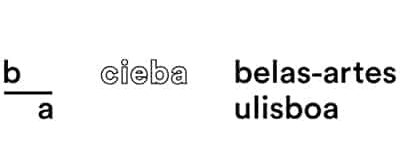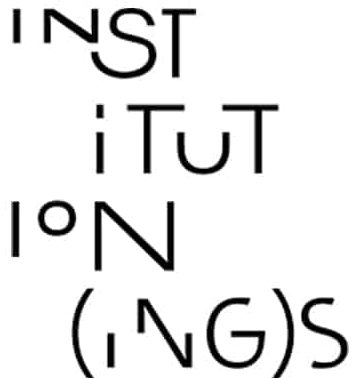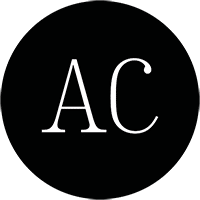
Dates / Schedules
July 18 to october 4, 2025 Museum entrance
Installation
tuuui trrrrrrrrrrrrrrrrr, by James Webb (1975, Kimberley, South Africa), operates as two chapters in the same story—There’s No Place Called Home (Belém, Lisbon) (2025) and Learning from Birds (2025). Most stories have, at least, a main character, a setting, and a time. The main character of this story is the song of a Woodland Kingfisher (Halcyon senegalensis), native to African regions south of the Sahara. The setting from which the birdsong can be heard is a magnolia located in the gardens of the MAC/CCB — Museu de Arte Contemporânea e Centro de Arquitetura (Museum of Contemporary Art and Architecture Centre), in Belém, Lisbon. The other setting of the story is the space of Radio-Gallery Antecâmara, in the Bairro das Colónias (Colonies’ Neighbourhood), in Lisbon, from which the same bird calls can be heard. The time of the story is now, 2025, as well as the colonial times that remain in the public spaces of today.
There’s No Place Called Home (Belém, Lisbon) (2025) is the latest iteration of the series There’s No Place Called Home (2004–). An ongoing intervention with twenty years of existence and approximately sixty unique versions, it always follows the same methodology: once a tree is selected, the song of a foreign bird—one that would never be found in that location—is chosen to be broadcast from audio speakers concealed in that tree. Birds and trees have a symbiotic relationship, where each benefit from the other: birds help disperse seeds, contributing to tree reproduction and biodiversity; trees, in turn, provide birds with shelter, nesting sites, and food (Faustino et al, 2024). The species of trees that can be found everywhere in the planet are deeply rooted in colonial legacies. In (dis)placing a foreign birdsong in a tree, James Webb is highlighting these colonial legacies.
European countries have extracted resources from their natural environments as a way of showing their imperial power, for economic profit, as well as for aesthetic reasons, to showcase “exotic” plants in environments where they would never grow. At the same time, European plants were intentionally introduced into colonised regions mostly for food production and survival, but also for “aesthetic and nostalgic reasons” (Crosby, 2004 in Lenzner et al, 2022:1724). After colonialism, the reorganisation of global trade intensified and accelerated the introduction of alien species worldwide (Lenzner et al, 2022:1723).The extraction and displacement of trees disrupt these natural ecosystems, impacting bird and tree populations, and ultimately humans: when a tree is placed in a foreign location, it will attract other species of birds, which in turn will respond differently to the environment.
The birdsong in the Lisbon iteration of There’s No Place Called Home is planted in two settings charged with colonial legacies. The neighbourhood of Belém, where MAC/CCB is located, is filled with monuments celebrating the colonial and imperial times of Portugal: Praça do Império (Imperial Square); Belém Tower; Jerónimos Monastery; Monument to the Discoveries; Belém Palace; and the Monument to the Overseas Fighters. In turn, the practices of colonialism embedded in the landscape are visible not only in the species of plants that can be found in all public parts of these monuments but also in the Tropical Botanical Gardens (formerly named Colonial Gardens), with more than 600 foreign species. On the website, the description of the Gardens reads: “With a strong educational vocation, with a view to exploring former colonies, especially in Africa, [the Garden] was considered an indispensable basis for teaching because a live example is essential for the demonstration to be rigorously scientific and educational” (2025). The use of the term “exploring” in the contexts of colonialism and imperialism is telling.
The second chapter of James Webb’s project, at Radio-Gallery Antecâmara, is situated in the former Bairro das Colónias (Colonies’ Neighbourhood), composed of streets named Angola, Guiné, Príncipe Island, S. Tomé Island, Macao, Mozambique, Timor, and Zaire, after former Portuguese colonies. Both urban sites represent an idealised Portuguese national identity after the end of the colonial empire. As Ana Balona de Oliveira reminds, these sites echo “the grand narrative of the so-called discoveries continues to deny the violent histories and memories of slavery and colonialism. This denialist narrative … remains deeply embedded in celebratory monuments, many of which were built under the aegis of the Estado Novo dictatorial regime (1926–74), while others have been erected much more recently” (2022:229).
The incongruous vocalisations of the Woodland Kingfisher are transmitted into Radio-Gallery Antecâmara via an online camera through which they meet the recorded sounds of the natural environment where this species would normally be found. Somehow, in this room, the foreign bird is put back into its habitat. Webb does not intend this to be a seamless transition; he is calling attention to the glitch. Birds are a source of inspiration for humans, possibly because they symbolise, above all, freedom, which is something that both humans and non-humans have been deprived of beyond colonial times. Today, the area where Radio-Gallery Antecâmara is located is inhabited by more than 45% of the international residents of Lisbon. This neighbourhood has been historically portrayed as a territory of migrants, associated with crime and poverty, a portrait that segregates and marginalises its inhabitants. As such, it embodies the colonial processes that continue to marginalise diasporic communities today, with the ongoing and growing gentrification processes. Inside the gallery, the Woodland Kingfisher becomes a sonorous metaphor for Willem Flusser’s notion of freedom, which he sees possible through the homelessness of the migrant (2003). As the title of James Webb’s series says, “There’s no place called home.”
Accompanying the recordings, Learning from Birds (2025), displayed on one of the walls of the gallery, consists of a collection of photographs, quotes, poems, songs, drawings, and other bits of inspiration drawn from how we live with and learn from birds. These sampled and remixed materials translate James Webb’s curiosity and profound approach to sourcing and collecting not only sounds but also images, texts, and most notably questions from different disciplinary areas and sources, reminiscent of the research methods of social scientists but also with the strangeness of mystics.
The vast repertoire of birdsong and their settings in the series There’s No Place Called Home invokes complex interconnections between human and non-human species as well as between different times and places. Our ancestors observed birds to divine changing weather, tune into their calls as safety alarms against predators in the area, and—like us—project their fantasies of flight and freedom onto them. Rather than Rachel Carson’s vision of a silent world without birdsong and diversity of species (1962),the poetic and political messages contained in There’s No Place Called Home leaves us wondering about the coexistence of past and present as well as of humans and non-humans, and how such coexistence may help us speculate pluralistic futures.
Text and curation by Luísa Santos
Project in collaboration with Galeria Antecâmara
-
The CCB Foundation reserves the right to capture images and sound recordings for the purpose of promoting and preserving the memory of its artistic activity.
Should you require any further clarification, please feel free to contact us at ccb@ccb.pt.
Data sheet
Artist James Webb
Coordination Pedro Campos Costa and Luísa Santos
Artistic Director MAC/CCB Núria Enguita
Curatorship and texts Luísa Santos
Editorial Coordination (artistʼs book): Luísa Santos, Sónia Rafael e Victor M Almeida
Graphic Design (artist’s book) Íris Sousa
Print
Risografia / Riso (FBAUL): Pedro Pereira
22 exemplares de exposição (não para venda nem distribuição) / 22 exhibition copies (not for sale or distribution)
Audio
The intervention at MAC-CCB contains audio recordings of Woodland Kingfishers made by Oscar Campbell, Tristan Horton, Isaac Kilusu, Frank Lambert, and Etienne Leroy. (CC BY-NC-SA 4.0) https://creativecommons.org/licenses/by-nc-sa/4.0/. The recordings have been edited with time inserted between the songs to lengthen the tracks.
Installation
José Nascimento (MAC/CCB)
Sérgio Caeiro (MAC/CCB)
Iván Prego (Rádio-Galeria Antecâmara)
Production
Mariana Scarpa (MAC/CCB)
Iván Prego (Rádio-Galeria Antecâmara)
Communication
Namalimba Coelho (MAC/CCB)
Maria João Jorge (Rádio-Galeria Antecâmara)
Maria Eduarda Duarte (Institution(ing)s)
Proofreading
Diogo Montenegro (MAC/CCB)
James Webb is represented by Galerie Imane Farès & blank projects
tuuui trrrrrrrrrrrrrrrrrr, by James Webb, is a project with two moments: an exhibition at Rádio-Galeria Antecâmara, which includes the publication Learning from Birds (2025); and a site-specific installation There’s No Place Called Home (Belém, Lisbon) (2025), at the MAC-CCB.
This publication is produced in the frame of the Institution(ing)s and in collaboration with CIEBA-FBA.UL Institution(ing)s is a medium-scale collaboration project coordinated by the CECC-Universidade Católica Portuguesa with 7 art institutions in 7 European countries, co-funded by the European Union. Views and opinions expressed are however those of the author(s) only and do not necessarily reflect those of the European Union or the European Education and Culture Executive Agency (EACEA). Neither the European Union nor EACEA can be held responsible for them. The views and opinions published here mirror the principles of academic freedom and do not necessarily reflect the views or positions of the Institution(ing)s and its members.
Partners
-


-

-


-
